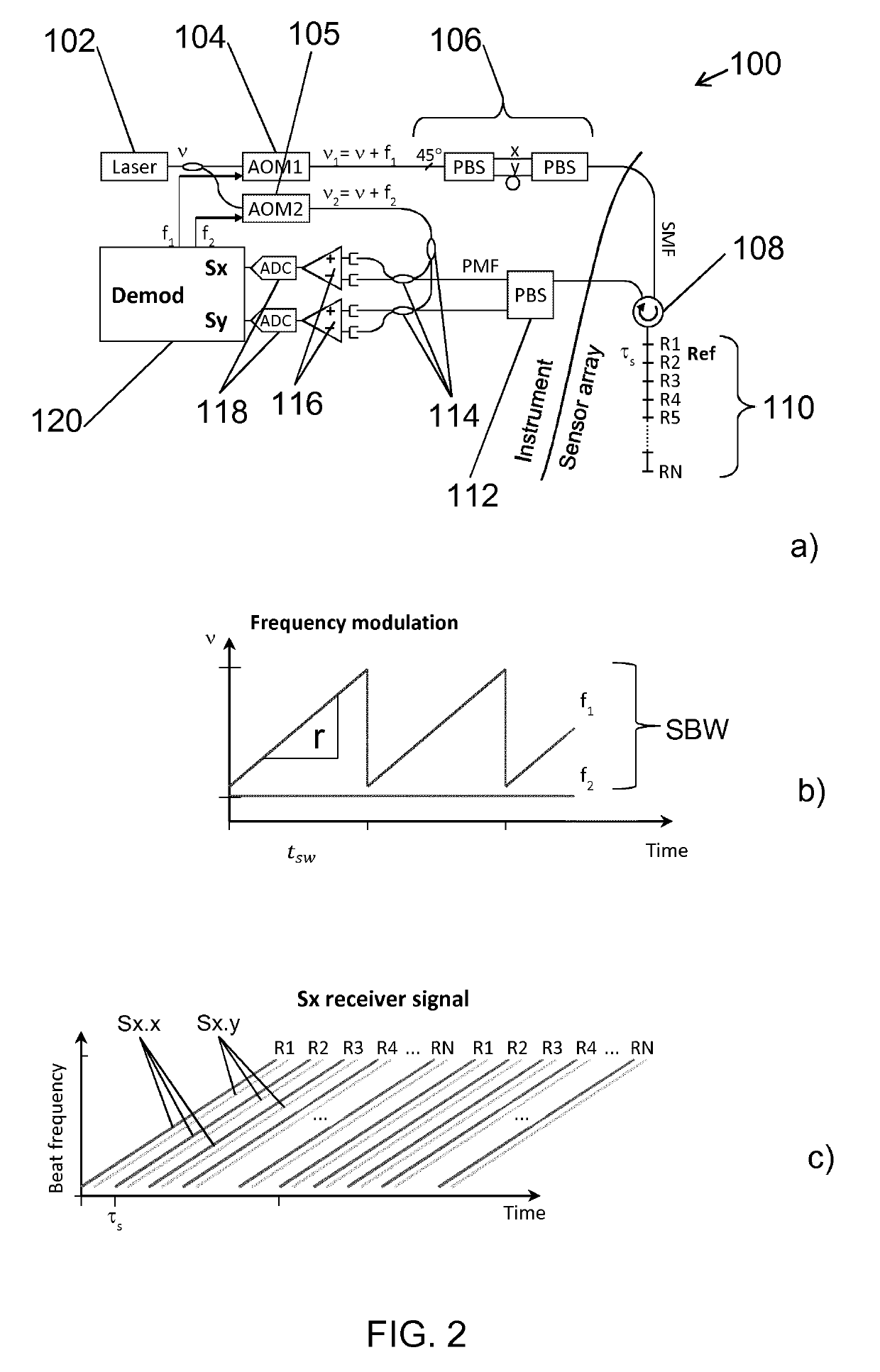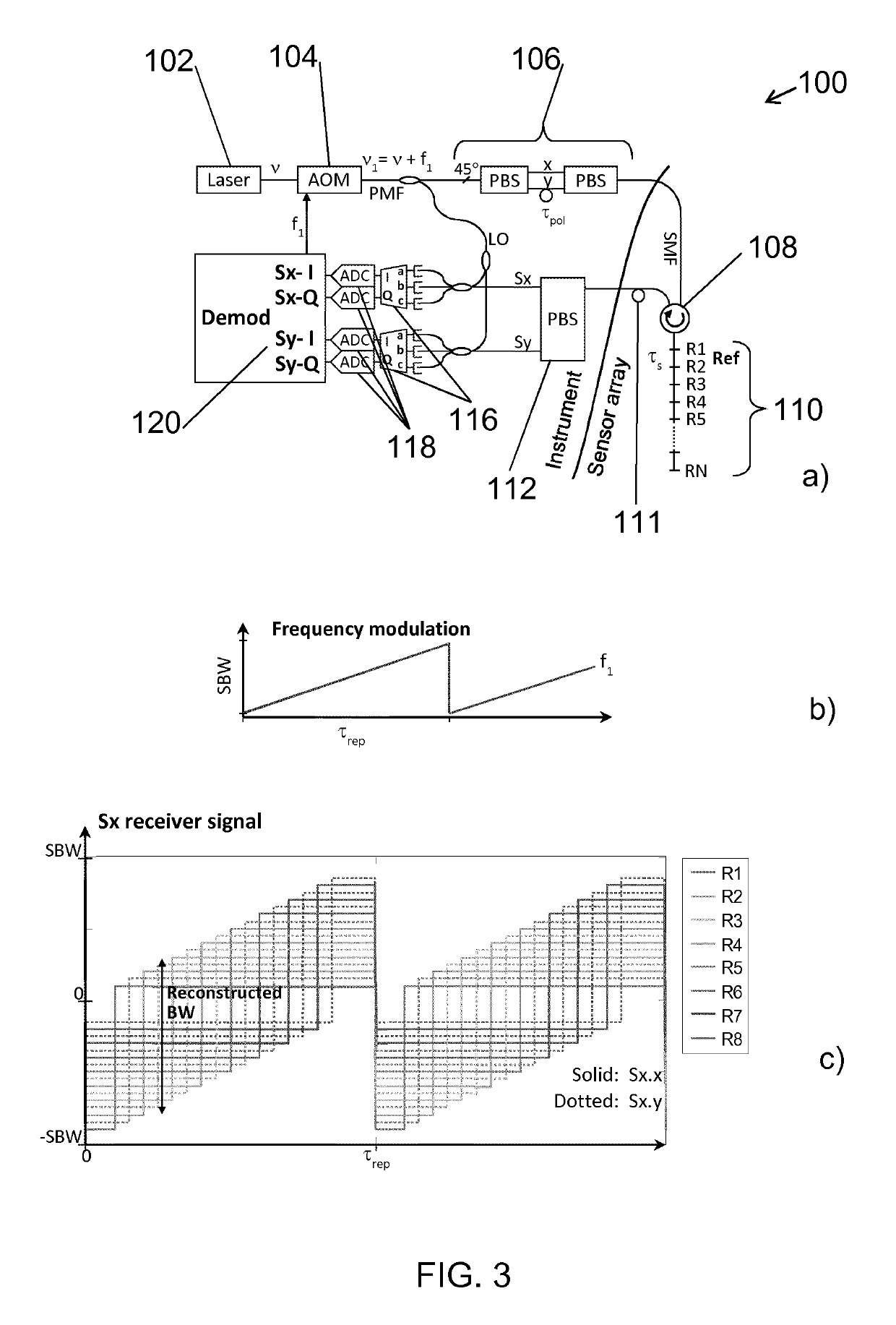Interferometric optical fibre sensor system and method of interrogation
a sensor system and optical fibre technology, applied in the field of interferometric optical fibre sensor systems, can solve the problems of reducing the dynamic range and the sensor phase resolution, and the limited sensor phase resolution of distributed interferometric sensing based on rayleigh scattering of the fibre, and achieves a large dynamic range and high sensor phase resolution
- Summary
- Abstract
- Description
- Claims
- Application Information
AI Technical Summary
Benefits of technology
Problems solved by technology
Method used
Image
Examples
Embodiment Construction
[0079]FIG. 1 illustrates the method 1 of interrogating an interferometric optical fibre sensor system according to the invention. First, interrogation light 2 is generated with a source laser. The laser may be of the continuous wave (CW) type. The interrogation light is frequency modulated 4 in a continuous and repeated manner, as defined above, to produce a swept interrogation light signal. The step of frequency modulation 4 may be performed in different ways, such as direct modulation of the laser source or modulation external to the laser source. External modulation may preferably be performed with an acousto-optic modulator (AOM). The swept interrogation light signal is then launched 6 into the optical fibre sensor array comprising at least two reflectors. Thus, the light launched will have a frequency which is dependent on the launch time, due to the sweep. Therefore, light being reflected from the reflectors at different positions along the sensor array will have different fre...
PUM
 Login to View More
Login to View More Abstract
Description
Claims
Application Information
 Login to View More
Login to View More - R&D
- Intellectual Property
- Life Sciences
- Materials
- Tech Scout
- Unparalleled Data Quality
- Higher Quality Content
- 60% Fewer Hallucinations
Browse by: Latest US Patents, China's latest patents, Technical Efficacy Thesaurus, Application Domain, Technology Topic, Popular Technical Reports.
© 2025 PatSnap. All rights reserved.Legal|Privacy policy|Modern Slavery Act Transparency Statement|Sitemap|About US| Contact US: help@patsnap.com



